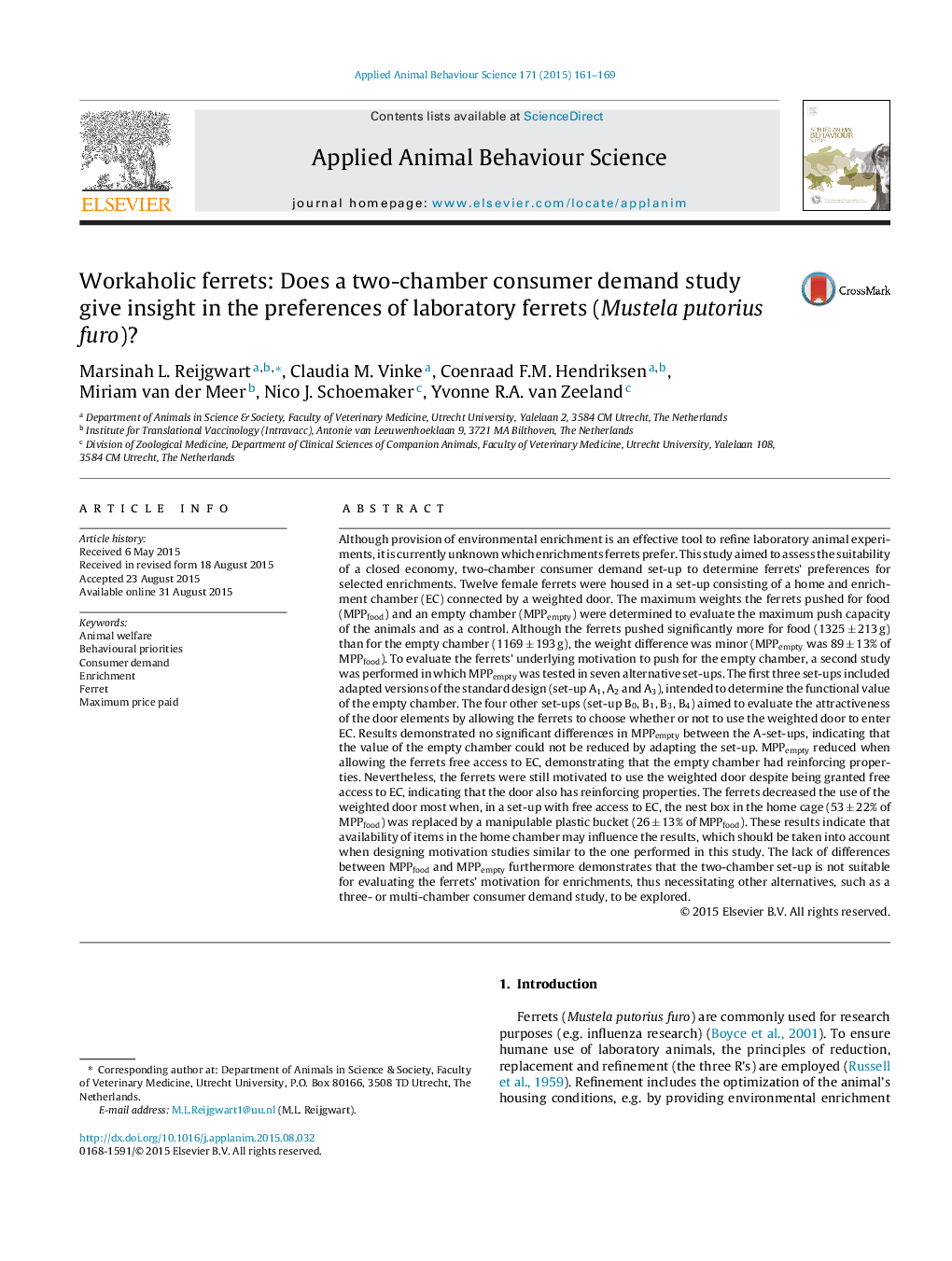| کد مقاله | کد نشریه | سال انتشار | مقاله انگلیسی | نسخه تمام متن |
|---|---|---|---|---|
| 6379493 | 1625335 | 2015 | 9 صفحه PDF | دانلود رایگان |

- We assessed the functionality of a two-chamber consumer demand study for ferrets.
- The ferrets almost pushed to their maximum capacity to reach an empty room.
- Ferrets continued pushing the weighted door even when they did not have to.
- The ability to manipulate items has an effect on the use of the weighted door.
Although provision of environmental enrichment is an effective tool to refine laboratory animal experiments, it is currently unknown which enrichments ferrets prefer. This study aimed to assess the suitability of a closed economy, two-chamber consumer demand set-up to determine ferrets' preferences for selected enrichments. Twelve female ferrets were housed in a set-up consisting of a home and enrichment chamber (EC) connected by a weighted door. The maximum weights the ferrets pushed for food (MPPfood) and an empty chamber (MPPempty) were determined to evaluate the maximum push capacity of the animals and as a control. Although the ferrets pushed significantly more for food (1325 ± 213 g) than for the empty chamber (1169 ± 193 g), the weight difference was minor (MPPempty was 89 ± 13% of MPPfood). To evaluate the ferrets' underlying motivation to push for the empty chamber, a second study was performed in which MPPempty was tested in seven alternative set-ups. The first three set-ups included adapted versions of the standard design (set-up A1, A2 and A3), intended to determine the functional value of the empty chamber. The four other set-ups (set-up B0, B1, B3, B4) aimed to evaluate the attractiveness of the door elements by allowing the ferrets to choose whether or not to use the weighted door to enter EC. Results demonstrated no significant differences in MPPempty between the A-set-ups, indicating that the value of the empty chamber could not be reduced by adapting the set-up. MPPempty reduced when allowing the ferrets free access to EC, demonstrating that the empty chamber had reinforcing properties. Nevertheless, the ferrets were still motivated to use the weighted door despite being granted free access to EC, indicating that the door also has reinforcing properties. The ferrets decreased the use of the weighted door most when, in a set-up with free access to EC, the nest box in the home cage (53 ± 22% of MPPfood) was replaced by a manipulable plastic bucket (26 ± 13% of MPPfood). These results indicate that availability of items in the home chamber may influence the results, which should be taken into account when designing motivation studies similar to the one performed in this study. The lack of differences between MPPfood and MPPempty furthermore demonstrates that the two-chamber set-up is not suitable for evaluating the ferrets' motivation for enrichments, thus necessitating other alternatives, such as a three- or multi-chamber consumer demand study, to be explored.
Journal: Applied Animal Behaviour Science - Volume 171, October 2015, Pages 161-169